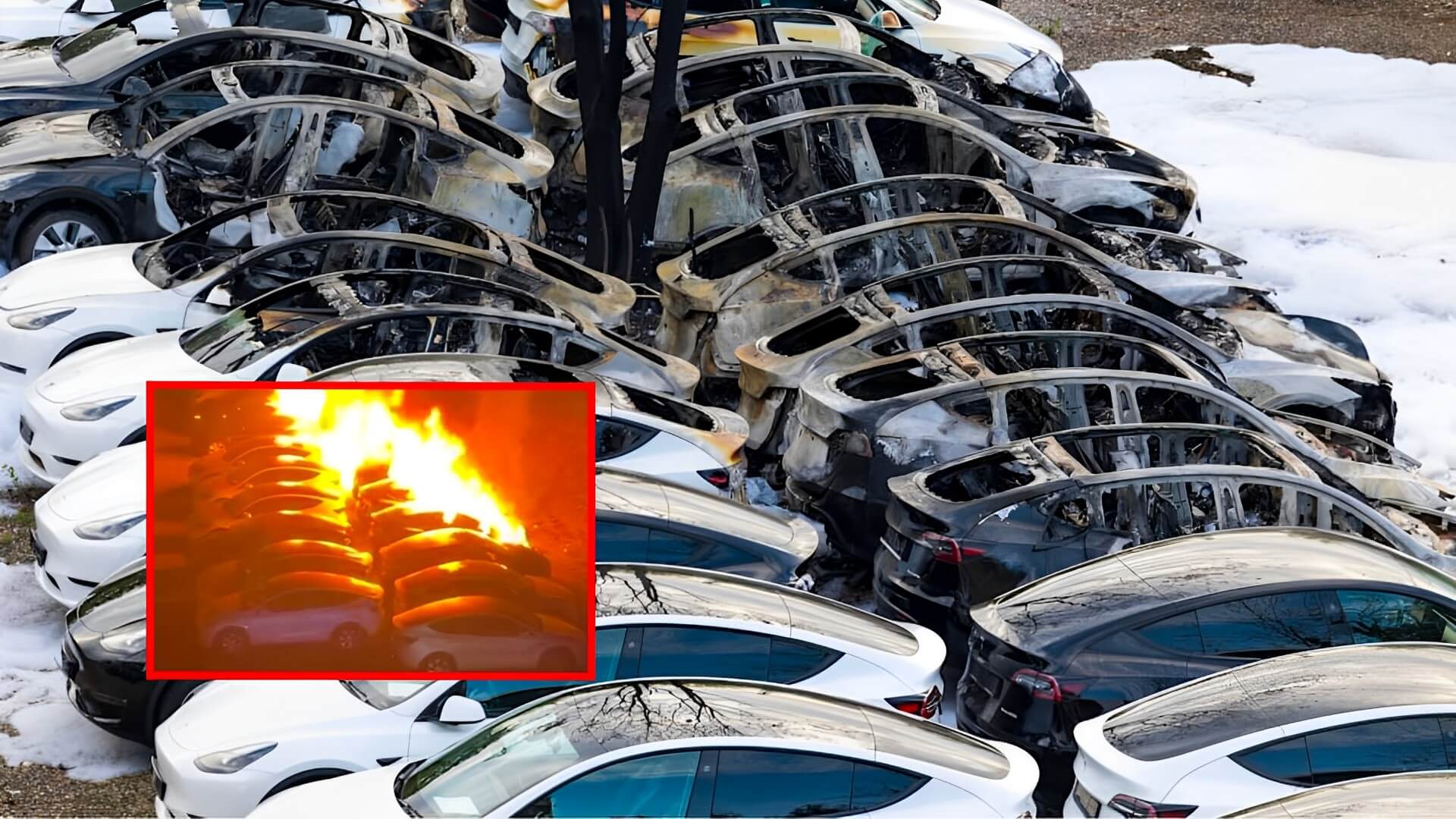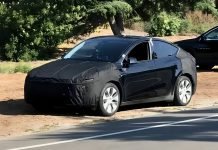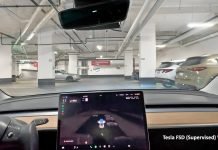In the early hours of a recent Tuesday night, a fire broke out in the parking lot of a car dealership in the Frankfurt district of Fechenheim, Germany. The blaze quickly spread, engulfing 10 Tesla vehicles. Emergency services were swift to respond, and firefighters managed to control and extinguish the fire within an hour. While the incident itself was unfortunate, it served to debunk some prevalent myths about the safety of Tesla vehicles, particularly concerning battery fires.
The incident has garnered significant attention, not just for the scale of the damage, but also for what didn’t happen: none of the Tesla vehicle batteries caught fire. This challenges the common misconception that electric vehicle batteries are prone to catching fire and poses serious safety risks. The Frankfurt incident serves as a case study that adds nuance to the ongoing discussions about the safety of electric vehicles, particularly Teslas.

Table of Contents
Tesla Cars Burst into Flames
The fire ignited at around 3 AM on a Tuesday night in the parking lot of a car dealership located in the Frankfurt district of Fechenheim. By the time emergency services arrived at the scene, the fire had already spread to several Tesla vehicles parked in the lot. The flames were intense, and the situation was quickly escalating. A total of 40 firefighters were dispatched to tackle the blaze. Their quick response was crucial in preventing the fire from causing even more extensive damage.
Quick Response from Firefighters
The firefighters managed to control and extinguish the fire within just one hour of their arrival. This was a remarkable feat given the number of vehicles involved and the intensity of the fire. Extinguishing foam was used to put out the fire. This method is effective for controlling fires involving flammable liquids, which likely contributed to the firefighters’ ability to quickly subdue the blaze.
After successfully extinguishing the fire, the firefighters didn’t immediately leave the scene. They remained vigilant, monitoring the burned vehicles to ensure that there were no reignitions.
The firefighters watched the vehicles until the morning, and it was confirmed that there were no reignitions. This extra measure of caution ensured that the situation was fully under control before they left the scene.
A great performance by the firefighters who extinguished a fire with 10 BEVs in just one hour. First firetrucks left after 60 minutes.
They watched the vehicles until the morning, but there were no reignitions.
When batteries catch fire the fireworkers put the entire vehicle… pic.twitter.com/RFgbQUeRIi
— Alex (@alex_avoigt) September 12, 2023
Extent of Damage: The Aftermath
In the aftermath of the fire, it was confirmed that a total of 10 Tesla vehicles were completely burned out. The charred remains of these vehicles served as a grim reminder of the incident’s severity. While the focus has largely been on the Tesla vehicles, it’s important to note that other vehicles in the vicinity were also damaged by the fire. The extent of this damage is still being assessed.
As of now, the cause of the fire remains under investigation. Authorities are working diligently to determine whether the fire was accidental or intentional, and what specific factors may have contributed to its outbreak.
Financial Impact
The financial toll of the incident is significant, with more than €500,000 worth of damage reported. This includes not only the value of the burned vehicles but also potential costs related to property damage and emergency response.
While Tesla vehicles are generally considered safe, incidents like this can raise questions and concerns among potential buyers and current owners. However, the fact that the batteries did not catch fire could serve as a mitigating factor in public perception, emphasizing the safety features of Tesla vehicles.
Debunking EV Battery Myths
The Frankfurt incident serves as a valuable case study for debunking myths surrounding EV battery safety. The fact that none of the Tesla batteries caught fire, even under such extreme conditions, provides compelling evidence that these batteries are more resilient than commonly believed. It also sheds light on the effectiveness of standard firefighting procedures, showing that in some cases, less extreme measures are sufficient to handle EV fires.
EV Battery Fire Risk
One of the most noteworthy aspects of the Frankfurt fire incident was that despite the severity of the blaze, none of the Tesla vehicle batteries caught fire. This is a significant observation that challenges some of the most common misconceptions about EV batteries.
The incident serves as a real-world case study that counters the narrative that EV batteries are inherently dangerous and prone to catching fire. While no technology is entirely without risk, the Frankfurt incident demonstrates that Tesla’s battery technology is robust enough to withstand extreme conditions without igniting.
Strength of Tesla’s Glass Roofs
Tesla vehicles are known for their focus on safety, and one of the standout features in this regard is the glass roof. The glass used in Tesla’s roofs is extremely strong in compression, designed to provide both aesthetic appeal and enhanced safety for the occupants. This strength is achieved through specialized manufacturing processes that make the glass highly resistant to various forms of stress.
In the event of a fire, the behavior of the glass roof is noteworthy. Even if the temperature during a fire doesn’t reach the melting point of the glass, it will expand and fracture within the frame. However, this does not compromise the structural integrity of the vehicle or pose additional risks to the occupants. The glass’s ability to withstand high temperatures without melting or causing further hazards adds another layer of safety in extreme conditions, as witnessed in the Frankfurt incident.
Conclusion
The recent fire incident involving Tesla vehicles in Frankfurt, Germany, serves as a significant case study in the realm of electric vehicle safety. Despite the fire’s intensity, which resulted in 10 Tesla vehicles being completely burned and caused over €500,000 in damages, none of the vehicle batteries caught fire. The rapid and effective response from firefighters, who extinguished the blaze within an hour, further underscores the resilience of Tesla’s engineering and safety features, including the strength of the glass roofs.
This incident holds substantial importance in the broader context of electric vehicle safety discussions. It challenges common misconceptions about the propensity of EV batteries to catch fire and highlights the effectiveness of Tesla’s safety features. As electric vehicles continue to gain popularity, understanding their safety mechanisms and real-world performance is crucial. The Frankfurt incident provides valuable insights into these aspects, serving as a reference point for both consumers and industry stakeholders.


















